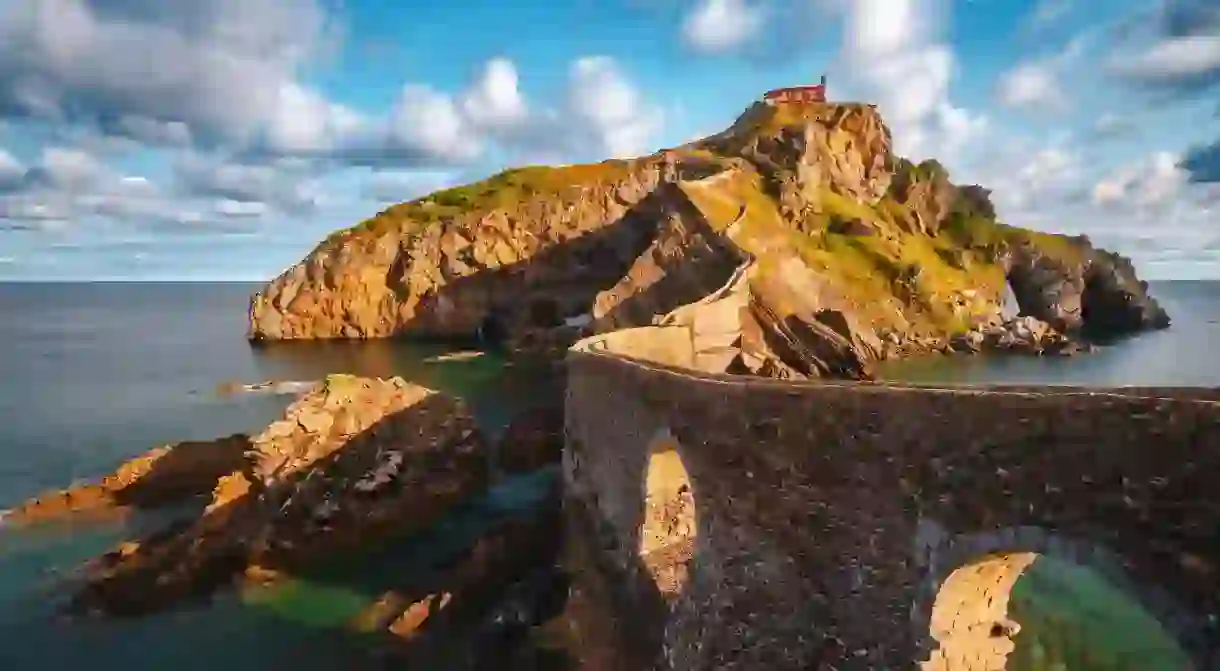14 Real Life Game of Thrones Locations to See in Spain

Game of Thrones is a titan of fantasy drama, with millions of people around the world watching each season, and many still discovering it. A binge-watch sensation, it’s hard to believe the programme’s otherworldly settings are real-life places – albeit with a little help from CGI in many cases. While the likes of Northern Ireland and Croatia starred in the early seasons, and filming also happened in Iceland, Malta, Morocco and Canada, Spain took centre stage from Season 5. Here’s where you can go for a glimpse of real-life Westeros.
Las Bardenas Reales
Natural Feature

The lunar landscapes of the semi-desert Bardenas Reales Natural Park in Navarra were an ideal backdrop for Game of Thrones in Season 6, when they doubled as the Dothraki Sea, a vast area of the continent of Essos. The wide plains are covered in green grass, which give them the appearance of a sea – hence the name. In Game of Thrones, the area is home to the Khalasars, horse-riding warriors who travel in groups of up to several thousand.
Peniscola
Architectural Landmark

Seville
Historical Landmark

Osuna
Architectural Landmark

The sleepy Andalusian town of Osuna got the Hollywood treatment when the cast and crew of Game of Thrones descended for a 14-day shoot for just a four-minute scene in Season 5. Osuna’s Plaza de Toros, or bullring, was the scene of the great pit fight of Daznak. The scene featured 550 extras, and stuntmen were set on fire in what became one of the season’s most memorable and dramatic moments, culminating in Daenerys flying off on the back of her dragon.
Roman bridge of Córdoba
Bridge

Girona Arab baths
Archaeological site, Building, Museum

Girona old town
Architectural Landmark, Historical Landmark

The medieval city in the northeastern region of Catalonia makes up a large part of Game of Thrones. In Season 6, the cobbled streets of the city’s old town were transformed into the Free City of Essos, where Arya Stark was living and being hunted by the Waif. A heart-stopping chase scene takes place on the steps of the city’s Sant Marti convent and a fight breaks out between them on the city’s Bisbe Cartaña street.
Girona Cathedral
Cathedral, Museum

Plaça dels Jurats
Architectural Landmark
The large plaza to the side of Girona Cathedral, Plaça dels Jurats also features as a popular filming location for another scene in Braavos – when Arya Stark goes to watch the outdoor theatre and sees her family being mocked by the actors. In fact, Plaça dels Jurats is actually used as an outdoor performance space in real life, with many events taking place there over the summer. Recommended by Esme Fox.
Gaztelugatxe
Architectural Landmark

In the far north of Spain, in the lush green region of the Basque Country, lies the dramatic islet of Gaztelugatxe, which was used as the location for Daenerys Targaryen’s ancestral home of Dragonstone. The island sits in the Bay of Biscay, joined to the mainland by a winding bridge. Daenerys is seen arriving at Dragonstone in the first episode of Season 7; she arrives from the sea, lands on the beach, and walks the winding path towards the imposing castle. Unfortunately, the real Gaztelugatxe is not home to a castle – that was added later – but you can visit the island’s 10th-century hermitage, dedicated to John the Baptist.
Almeria
Cathedral, Church

Castell de Santa Florentina, Barcelona
Architectural Landmark

This 11th-century Medieval castle in Canet de Mar, near Barcelona, doubled for House Tarly’s home castle in Season 6. Although the castle is private property, it can be visited by appointment. But even if you don’t go inside, the exterior is well worth a look – it’s one of the most striking of Game of Thrones‘ Spain locations.
Castillo de Zafra
Architectural Landmark

The 12th-century Castle of Zafra in Guadalajara is a stunning fortress that sits on a sandstone outcrop, a perfect location for the fantasy setting of Game of Thrones. It doubled for the Tower of Joy – a tower located on the northern edge of the Red Mountains of Dorne – in three episodes of Season 6.
Monastery of Sant Pere de Galligants
Architectural Landmark

The Monastery of Sant Pere de Galligants is a Benedictine Abbey built in the 12th century and is one of Catalonia’s most important Romanesque sites. Today, it houses Catalonia’s Archaeological Museum. The monastery was used as the setting for the Maesters’ citadel in Oldtown, meaning that Girona was Braavos, King’s Landing and Oldtown all at the same time. You can see the inside of the monastery clearly in the scene when Sam, Gilly and the baby first arrive. Recommended by Esme Fox.













